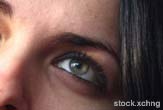Window to the Heart: New Eye Exam Spots Disease Risk

Some say the eyes are the window to the soul, but an Australian medical researcher says they are the window to the heart and beyond.
Tien Wong of the Center for Eye Research Australia at the University of Melbourne has shown in several large-scale studies that abnormalities of the blood vessels in the retina can be used to predict patients' risk for diabetes, hypertension (or high blood pressure), stroke and heart disease.
These four disorders are some of the most common causes of death, hospitalization and disability in the developed world. But the ability to predict them is limited.
In plain sight
The retina is a membrane that surrounds the eyeball and receives light from the lens and converts it into signals that reach the brain and result in vision [Graphic: The Eye].
Wong's approach involves analyzing digital photographs of patients' retinas and studying them to find narrowing or ballooning of the small blood vessels. Systemic diseases—those that affect several organs or the whole body—such as hypertension, diabetes, AIDS, Graves' disease, lupus, atherosclerosis, multiple sclerosis, rheumatoid arthritis, and sickle cell anemia often cause changes in the eye that can show up as red dots or small blood clots.
Inside the Eye
Blood vessels of the eyes are so predictive because they are part of the brain's vascular system, so they share anatomical features and respond similarly to stress and disease, Wong said.
Sign up for the Live Science daily newsletter now
Get the world’s most fascinating discoveries delivered straight to your inbox.
In fact, eyes are so transparent compared to the rest of the body that they are the only organ that allows physicians to directly see blood vessels. The digital photography approach is non-invasive—no blood is taken, no incisions are made, no probes in orifices. It takes just a few seconds.
Wong has shown that retinal abnormalities are a good predictor of whether a patient will develop high blood pressure or die of cardiac disease in the next 10 years.
"My hope is that one day, retinal imaging will be able to provide an additional means to stratify risk and help identify people who may benefit from early lifestyle changes and preventive therapies,” Wong told LiveScience.
Eyes on the Internet
The idea that the eye is a window to the human body has been around for more than a century, but Wong has figured out how to make precise and quantifiable predictions for illness based on retinal abnormalities that can be used as a standard by all doctors.
Wong sees a future in which physicians include retinal data in making treatment decisions. First, they'll need to arrive at a common classification system for diagnosing retinal abnormalities.
How Heart Attacks Strike
Ultimately, Wong and his colleagues, who now are setting up a Retinal Vascular Imaging Center in Melbourne, plan to develop a Web-based system to which doctors can upload digital images of patients' retinas. The system will report back the extent of a patient's cardiovascular disease.
It remains to be seen, though, how useful the system will be and with how many diseases it may prove helpful.
Emily Chew, a medical researcher at the National Eye Institute in Bethesda, said she was not surprised by Wong's findings relating retinopathy with diabetes.
"It is important for all persons with diabetes to have regular eye exams (annually) and for those over 65 to have eye exams on a yearly basis to detect any eye disease that maybe treatable, Chew said in an email interview.
However, Chew said eye exams will pick up only a small percentage of the population that have other systemic diseases and "one would not screen with eye exams for systemic diseases.”
Robin Lloyd was a senior editor at Space.com and Live Science from 2007 to 2009. She holds a B.A. degree in sociology from Smith College and a Ph.D. and M.A. degree in sociology from the University of California at Santa Barbara. She is currently a freelance science writer based in New York City and a contributing editor at Scientific American, as well as an adjunct professor at New York University's Science, Health and Environmental Reporting Program.











